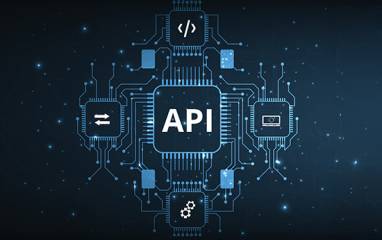Other recent blogs
Let's talk
Reach out, we'd love to hear from you!
As customers, we hate it when we are constantly bombarded with sales/marketing messages and calls.
In this age and era, the customer is the protagonist. And to succeed and make the customer fall head over heels for our product, we must make everything about him.
Notion, Slack, Dropbox, Figma, Pinterest, HootSuite, and Atlassian are some of the companies that have done outstanding work in the realm of delivering exceptional customer experiences, and though there can be numerous factors behind their success, one major factor has been their extreme focus on perfecting their product.
We call this ‘product-led growth,’ where you truly deepen your understanding of your customer's journey and build your product to seamlessly fit around his/her needs.
What is product-led growth (PLG)?
In a product-led business strategy, the product leads the way and ensures success for the organization.
The idea of putting a product out there in the market and making the teams stand behind it is kind of revolutionary - or, at least, it is a dramatic contrast with the traditional ways or methods of approaching, acquiring, converting, and keeping a customer.
In a sales-led or marketing-led approach, it's more about cajoling the customer toward the product. It’s like stopping the customer midway when he is busy doing something meaningful and using that salesy pitch to introduce your product.
On the other hand, a product-led growth methodology is about gaining a deeper understanding of the customer, things that trouble him the most that your product can possibly solve, and then ensuring minimal friction between the customer and the product.
Product-led growth calls for coordination and collaboration between cross-functional teams. From engineering to design to marketing and sales, every department comes together to make the product successful.
What makes PLG imperative for businesses?
A product-led growth strategy minimizes the dependency of a business on its sales and marketing teams.
With PLG, you can significantly reduce millions of dollars you’d otherwise spend on marketing campaigns. Moreover, PLG also embeds smoother communication and collaboration across the business that further helps consistently make the product a better fit for the user.
Top benefits of product-led growth
Embracing a product-led growth mindset unlocks a full stream of opportunities and benefits - but here are the most important:
- Rapid rise in customer acquisition and retention: A PLG model helps you capture a greater market share, a larger customer base, as one can try the product without paying much upfront.
However, it does not only help you win a larger market share but also keep the customers for a longer period of time (so you get to enjoy increased customer retention, which eventually leads to increased customer lifetime value.)
Moreover, you can manage the whole exercise without spending a fortune as is required in some of the predecessors, such as marketing-led or sales-led growth strategies where you are required to set up big teams and invest millions of dollars in GTMs to spark customer interest in what you have to offer. - More focused and streamlined product development: Your product - especially a SaaS product - grows the most with user feedback. And a product-led growth strategy enables you to acquire tons of user feedback as they get to use the product for free or for a rather nominal subscription fee.
Product teams can harness this customer usage data to perfect the product and make it more valuable for their end users while paving the way for improved customer experience and word-of-mouth referrals. - Reduced sales cycles: Customers, these days, want to be self-educated about a product or service and do not like to talk to marketers or customer service representatives unless they feel so.
Under PLG-driven business strategies, customers can self-onboard and test out the product without paying anything upfront.
This new mechanism eliminates the gaps and frictions between the product and the user, and thus, the customer does not realize that he/she is already at the top of your sales funnel and is more likely to purchase the product once they hit the maximum usage limit offered under the free plan.
3 pillars of a product-led growth strategy

- Prioritize the end user in your build
When developing a Product-Led Growth (PLG) product, according to OpenView partners, the key is to always have the end user in mind. This is not just a suggestion; it's a fundamental requirement for PLG's success. A remarkable product that genuinely addresses user needs is essential for PLG to thrive.
Notably, the focus on the end-user extends beyond product teams. The ethos of building for the end user is ingrained in all Go-To-Market (GTM) facets of PLG companies, encompassing marketing, customer success, and sales. Every campaign, sales strategy, or customer communication should be assessed from the perspective of the end user's experience. Building for the end user is a mindset applicable to every aspect of a company.
The emphasis lies in comprehending user pain points, actively listening to their issues, and consistently enhancing the product based on their feedback to resolve their problems more efficiently. - Focus on ‘delivering instant value’
Customers are getting increasingly impatient these days - so you better not build a product that tests their patience.
To build a thriving sales funnel of self-serve customers, you need first to streamline the entire onboarding process.
Second and more importantly, you must deliver upfront value. Do not make them wait. Do not make them think. They should see the value from the moment of their very first interaction with your product. - Decisions are rooted in data insights
You might have decades of experience. You might have extreme faith in your gut feelings. But PLG is not a gut-driven game; instead, it is about using data insights to drive decisions that impact your product and its users.
It’s about embedding an experiential mindset deep into your team and enabling them to succeed or learn from their mistakes using real-time data insights.
So, when you build your product, ensure that every step of its journey is embedded with or powered by advanced analytics.
Begin your journey toward product-led growth
The first step is to develop a product: Product-led growth is all about a product. Therefore, you first need a product that solves some real-world challenges, the way Slack did for professionals and creatives.
However, you better not start with the product - there is another stage that comes before product development. And we call it ‘connecting with customers.’
To build a product that your customers can not live without, you need to know the inside out of your customers
You have to know the problem first. And then develop a solution in the form of your product.
The second step is to enable ‘seamless self onboarding’: Customers, in this age and era, do not want to be educated. They do not want to talk to your team a lot about the product. They just want to use it and find out whether it helps them.
Therefore, once you build a product based on extensive customer research and feedback, you must make customer onboarding seamless. Look at how you first discovered and used ‘Slack,’ ‘Trello,’ ‘Gmail,’ and thousands of other apps and platforms.
Let your marketing, sales, and customer service teams await - let the customer reach out if he/she ever feels the need. Else, stay away.
The third step is to consistently gather data and improve the product: PLG companies are obsessed with their products. They know the competition in the market is rising at an unprecedented rate and that the only way to acquire and hold customers forever is to keep the product fresh and relevant. So customers never get bored using it for years. Look at the way SaaS companies keep innovating and improving their product portfolios.
It’s good to remind yourself that PLG is never a destination - instead, it is a journey you undertake, and you must enjoy it. There are several other factors as well that you may have to think about while building a PLG culture within your organization, such as getting ‘buy-ins’ from stakeholders across departments and pricing structure (it’s a freemium model, after all).
A few final thoughts
Product-led growth (PLG) requires a dramatic shift in traditional marketing and selling strategies.
By putting the product front and center, the top product-led growth companies radically change the game's rules and build a very powerful competitive moat around their businesses.
To build next-generation digital products to drive customer engagement and business revenue, connect with Team Kellton.






